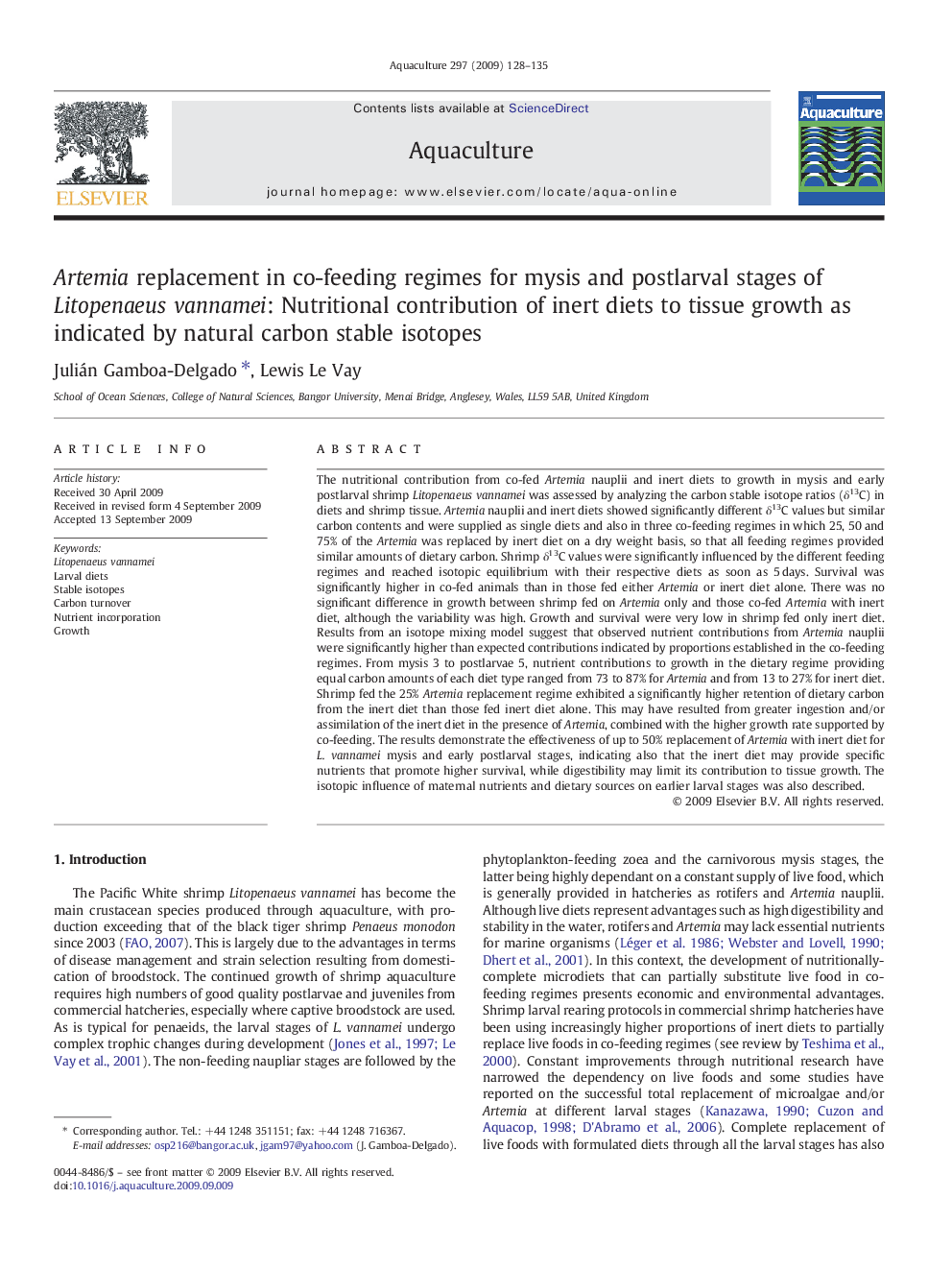| Article ID | Journal | Published Year | Pages | File Type |
|---|---|---|---|---|
| 2423807 | Aquaculture | 2009 | 8 Pages |
The nutritional contribution from co-fed Artemia nauplii and inert diets to growth in mysis and early postlarval shrimp Litopenaeus vannamei was assessed by analyzing the carbon stable isotope ratios (δ13C) in diets and shrimp tissue. Artemia nauplii and inert diets showed significantly different δ13C values but similar carbon contents and were supplied as single diets and also in three co-feeding regimes in which 25, 50 and 75% of the Artemia was replaced by inert diet on a dry weight basis, so that all feeding regimes provided similar amounts of dietary carbon. Shrimp δ13C values were significantly influenced by the different feeding regimes and reached isotopic equilibrium with their respective diets as soon as 5 days. Survival was significantly higher in co-fed animals than in those fed either Artemia or inert diet alone. There was no significant difference in growth between shrimp fed on Artemia only and those co-fed Artemia with inert diet, although the variability was high. Growth and survival were very low in shrimp fed only inert diet. Results from an isotope mixing model suggest that observed nutrient contributions from Artemia nauplii were significantly higher than expected contributions indicated by proportions established in the co-feeding regimes. From mysis 3 to postlarvae 5, nutrient contributions to growth in the dietary regime providing equal carbon amounts of each diet type ranged from 73 to 87% for Artemia and from 13 to 27% for inert diet. Shrimp fed the 25% Artemia replacement regime exhibited a significantly higher retention of dietary carbon from the inert diet than those fed inert diet alone. This may have resulted from greater ingestion and/or assimilation of the inert diet in the presence of Artemia, combined with the higher growth rate supported by co-feeding. The results demonstrate the effectiveness of up to 50% replacement of Artemia with inert diet for L. vannamei mysis and early postlarval stages, indicating also that the inert diet may provide specific nutrients that promote higher survival, while digestibility may limit its contribution to tissue growth. The isotopic influence of maternal nutrients and dietary sources on earlier larval stages was also described.
